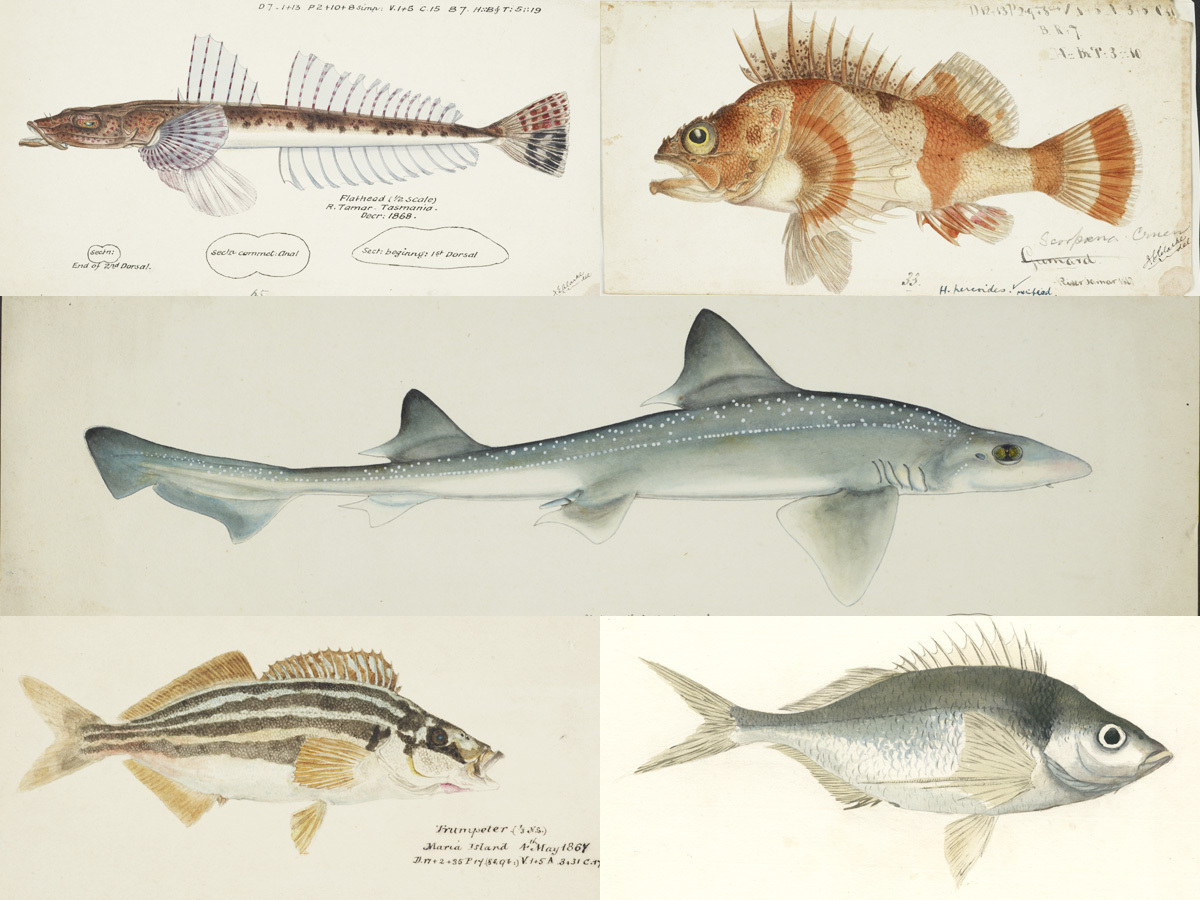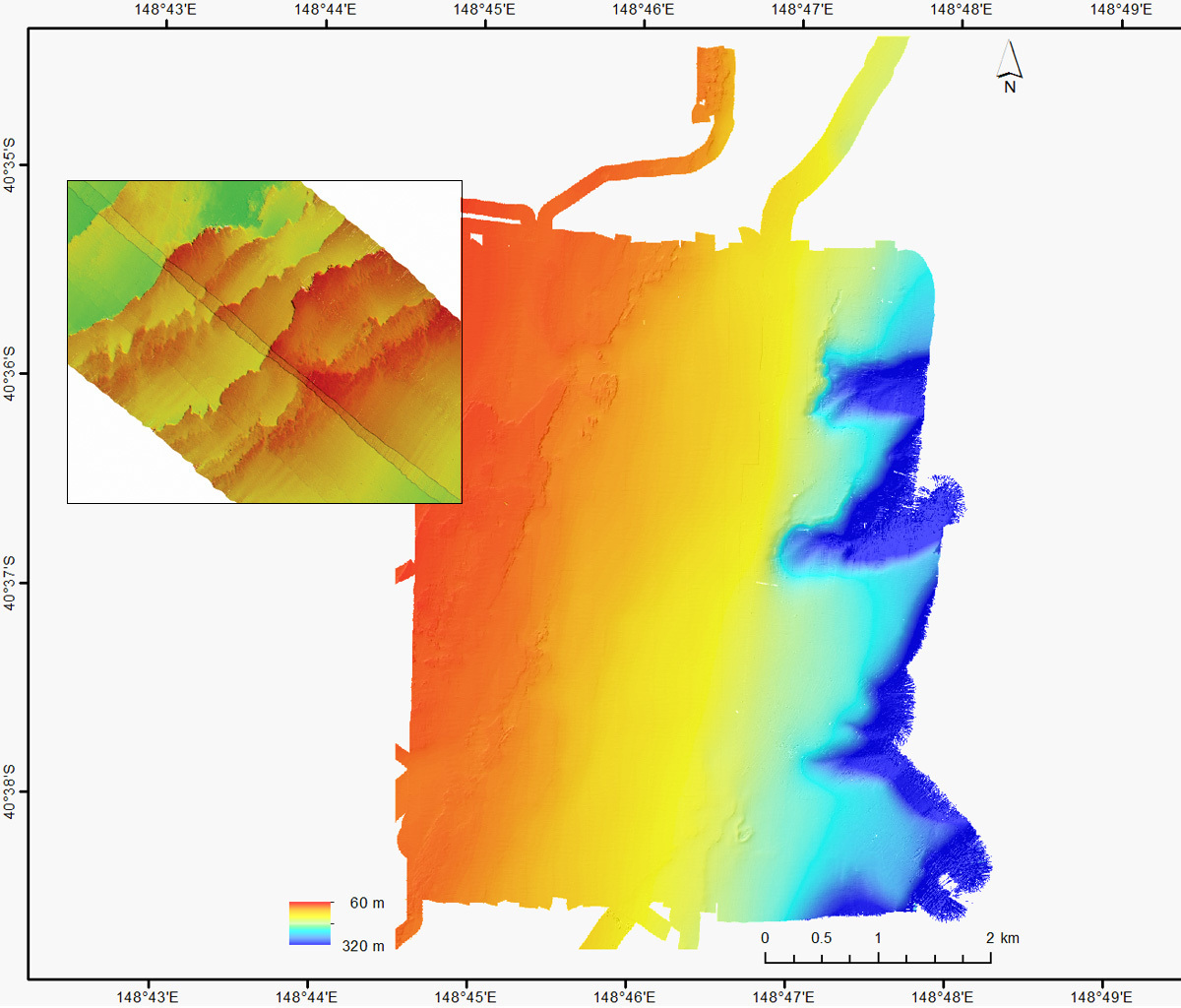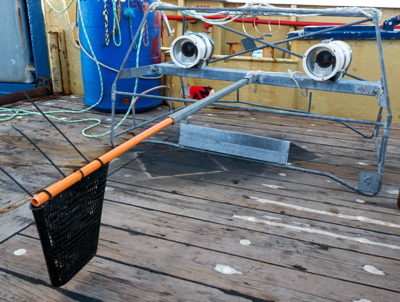May 10, 2018
A Marine Biodiversity Hub study reported in the journal Ecological Indicators has selected a core indicator group of six fish species for the Flinders Marine Park.
Striped Trumpeter, Reef Ocean Perch, Gummy Shark, Jackass Morwong, Tiger Flathead and Sand Flathead are commercially and ecologically important, and commonly spotted in sandy and rocky reef habitats on the Flinders shelf.
They were sampled there using baited remote underwater video systems and an efficient spatially-balanced survey design. This monitoring approach is expected to be able to detect changes in fish abundance on a scale relevant to park management, and is transferrable to other regions and other marine parks for which there are limited spatial and biological data.

Why is monitoring important for Australian Marine Parks?
Australia’s 58 marine parks were established to protect regionally-representative habitats and biodiversity. They will be governed by six management plans: one for each of the five marine park networks (North, North-west, South-west, South-east and Temperate East) and one for the Coral Sea.
‘Monitoring is key to determining whether these management plans are meeting their objectives,’ lead author of the study Nicole Hill of the Institute for Marine and Antarctic Studies says. ‘But marine parks are typically large and remote, with little known about their ecosystems. How do we decide what to monitor, and how to monitor in ways that are non-destructive and efficient?’
Dr Hill and her colleagues considered these questions for Flinders Marine Park, which stretches across 600 kilometres from Tasmania’s Cape Barren Island out into the Tasman Sea. A ‘multiple-use’ zone at the park’s western edge crosses the continental shelf at depths of 40–180 metres. The area has been subject to a range of fishing restrictions since the park was declared in 2007.
Seabed habitats on the shelf consist of large swaths of sediment broken by low profile rocky reefs. Steep rocky outcrops occur at the shelf break and heads of canyons. The rocky reefs are cloaked with sponges and bryozoans that provide rich pockets of food and protection for a diversity of fish.
The Hub team began mapping Flinders shelf habitats in 2012. Using multibeam sonar, baited remote underwater video systems (BRUVS) and autonomous underwater vehicles, they produced the first comprehensive, high-resolution maps of reef systems and associated invertebrate marine life.
What are the benefits of spatially-balanced survey design?
The sampling sites at Flinders were selected using spatially-balanced sampling, which involves collecting samples at small scales across broad areas. It ensures that sample sites are distributed in a spatially balanced way that is representative of the area of interest, such as the shelf habitats of a marine park. Without such an appropriate sampling design we can have little confidence in inferring the status of the area of interest from the individual samples.
‘This particular approach avoids problems experienced with other sampling designs such as judgemental sampling, simple random sampling, or the placement of samples on a regular grid,’ Dr Hill says. ‘The flexible survey design can also accommodate unexpected loss of sampling effort due to poor weather, equipment breakdowns, or resource constraints, without comprising statistical validity.
‘In fact, because of the large size of the Flinders survey area, when we returned to the park to deploy the BRUVS in 2013, there wasn’t enough time to cover all the sites we initially sampled for habitat type in the first survey. Instead, we revisited a subset of 11 sites and sampled clusters of surrounding sites. This subset focussed less on sediment habitats and more on mixed-reef habitats, which are recognised as an important conservation feature in the FMP.
‘Deploying clusters of BRUVs in this manner meant that we were able to deploy and retrieve a cluster of five BRUVs in approximately two hours before steaming to the next cluster. This was much more efficient than completing one BRUV deployment in about an hour, before steaming to another site.’

What were the fish habitat preferences on Flinders shelf?
The distribution and abundance of fishes observed at the revisited BRUVS sites was used to establish a monitoring baseline for the potential indicator fishes. Jackass Morwong was the most abundant, followed by Striped Trumpeter, Reef Ocean Perch, Tiger Flathead and Tiger Flathead, then Gummy Shark.
Most of the species had a patchy distribution across the shelf, with distinctive patterns explained to varying degrees by substrate type, depth and latitude. For example, Reef Ocean Perch favoured mixed reef in the southern end of the Marine Park. Striped Trumpeter was very patchily distributed and only found on a few mixed reef sites in high numbers, but did not vary significantly with depth or latitude. Jackass Morwong was more widespread and favoured mixed reef, in shallower waters and in the south. Tiger Flathead was more abundant on sand and at shallower depths.

BRUVS monitoring detects changes in fish abundance
Analyses estimated that if sampling were repeated, increases in fish abundance as small as 50 percent throughout the park should be detected for most species under particular sampling scenarios. This is considered sufficient to identify differences occurring over time in response to management changes such as protection from fishing, and it means the fishes have potential as indicators of ecosystem change.
‘The sampling approach we used at Flinders satisfied the need for efficient, non-extractive monitoring,’ Dr Hill says. ‘We were able to scale up the abundance estimates for each site across the entire Marine Park, and if sites in the species’ preferred habitat are revisited, the sampling effort can be reduced.’
Many of the fish species in the indicator group have wide distributions spanning temperate Australia, and are targeted by both commercial and recreational fishers using various fishing gears (some of which are prohibited in the Flinders multiple use zone). This means the approach could be applied in marine parks and adjacent fished locations to evaluate the varying levels of protection from fishing.
Dr Hill warns, however, that focussing repeat sampling within one habitat may not necessarily suit the objectives of a monitoring program in which the selected indicator species occur in a variety of habitats, or where more information is required on the spatial distribution of assets in the marine park. In the latter case, it may be better to revisit a proportion of sites while gaining information on new sites that can be identified and analysed using a spatially-balanced rotating panel design that incorporates the established and newer sites.
Further reading
Journal article: Developing indicators and a baseline for monitoring demersal fish in data-poor offshore Marine Parks using probabilistic sampling
- Log in to post comments
